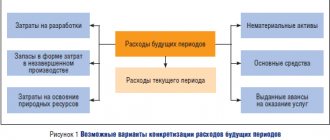The services of banks are used by all organizations and entrepreneurs carrying out economic activities. Most of the services are provided by credit institutions on a paid basis; the fee for such services is called a bank commission.
In order to attract clients, financial institutions are constantly expanding their range of services, offering not only financial intermediation, but also software products in the form of personal accounts with a set of accounting functions and reporting forms.
The most popular services of credit institutions include:
- settlement and cash services for ruble and foreign currency accounts;
- remote management of settlement operations through a client bank;
- currency control;
- accepting and issuing cash;
- cash collection;
- SMS notifications about payment transactions;
- acquiring operations for accepting card payments;
- issuance and servicing of payment cards;
- factoring operations;
- provision of bank guarantees.
In accounting, expenses associated with servicing in credit institutions are classified as other expenses (clause 11, paragraph 6 of PBU 4/99 “Expenses of the organization”) and are reflected in account 91.02 “Other expenses and income.”
From the point of view of accounting entries, the list of the most common bank services can be divided into two types of operations: not subject to VAT and subject to VAT.
Let's look at the accounting entries for each type of transaction.
Bank services: transactions without VAT
Operations for opening and servicing a current account, cash transactions (except for collection), making payments, issuing a bank guarantee, servicing a bank client and others listed in clause 3 of Article 149 of the Tax Code of the Russian Federation are not subject to taxation.
Services of credit institutions without VAT should be reflected in correspondence with the cash account:
Dt 91.02 Kt 51, 52, 55, 57.
Bank transactions for services without VAT:
| Operation | Debit | Credit |
| Commission for execution of payment order | 91.02 | 51 |
| Commission for RKO in March | 91.02 | 51 |
| Fee for using a bank client | 91.02 | 51 |
| Commission for execution of payment in foreign currency | 91.02 | 52.02 |
| Acquiring fees | 91.02 | 57.03 |
| Refund of erroneously charged commission | 51 | 91.01 |
If an organization deposits funds in excess of the cash limit to a bank for crediting to a current account independently, without involving collectors, then the service for receiving and recounting cash is not subject to VAT.
Delivery of proceeds to the bank, postings:
| Operation | Debit | Credit |
| Cash deposit to current account (revenue) | 51 | 50 |
| Cash conversion fee | 91.02 | 51 |
| Cash acceptance fee | 91.02 | 51 |
A banking offer called “salary project” has become quite popular, which allows organizations to save accounting time on issuing wages, shortens and simplifies the procedure for paying wages.
Many credit organizations charge a commission within the framework of a salary project for transferring funds to employee cards; this type of commission is not subject to VAT. The accounting entry when paying for servicing a salary project:
Dt 91.02 Kt 51.
Bank commission: grounds for its calculation
The basis for charging commissions are agreements for maintaining a current account, servicing a deposit or issuing a loan. Within the framework of these agreements, the terms of the relationship between the organization and the bank are stipulated.
The following list of services for which commissions are paid can be distinguished:
- Ongoing maintenance of the current account with subsequent installation and maintenance of the Client-Bank program.
- Cash collection.
- Transactions of purchase and sale of foreign currency.
- Providing and maintaining a credit line.
- Property management on a trust basis.
- Rent of deposit boxes.
- Use of leased property.
For each type of banking services provided to the client, a separate agreement is drawn up, which details the conditions for the provision of these services, the amount and procedure for paying the bank commission.
Postings to the bank for services subject to VAT
Banking products not specified in clause 3 of Art. 149 of the Tax Code of the Russian Federation, are subject to VAT at a rate of 18% in the general manner. The peculiarity of these banking services is that it is necessary not only to pay for them, but also to obtain primary documents confirming the fact of their receipt. To reflect expenses for services of credit institutions, subject to VAT, the use of an account for mutual settlements with suppliers is required; most often, account 76 is used for these purposes.
When the bank's services are paid for, the posting is generated in correspondence with the cash accounts:
Dt 76 Kt 51.
When the UPD is received from the bank, a posting is generated in correspondence with the expense account.
Examples of transactions for banking services with VAT are given in the table.
| Banking service | Debit | Credit |
| Service costs under the factoring agreement, including VAT | 91.02 19.04 | 76.13 76.13 |
| Paid expenses under the factoring agreement (statement) | 76.13 | 51 |
| Expenses for servicing a foreign exchange contract, including VAT | 91.02 19.04 | 76.09 |
| Paid the bank commission for performing the functions of a currency control agent (bank statement) | 76.09 | 51 |
| Expenses for collection of proceeds by the servicing bank | 91.02 19.04 | 76.09 |
| Collection of proceeds paid (extract) | 76.09 | 51 |
Tax accounting: production or non-sales?
Banking fees are a common expense item for a company. However, their accounting is not as simple as it seems at first glance. We will help you figure it out.
T.N. Kovaleva, expert of AG “RADA”
The company pays the bank for services for opening an account, debiting and crediting funds, issuing cash, etc. The cost of all types of services and their specific list are stipulated in the agreement between the company and the bank. For example, in a bank account agreement (agreement for cash settlement services).
The payment schedule for bank services is also fixed in the agreement. The bank may charge the firm every day for account transactions or debit a set amount once a month.
At first glance, it is not difficult to classify the costs of paying for banking services. However, in practice this turns out to be a serious problem for many accountants. This is due to the fact that accounting and tax treatment of these expenses are different.
According to the norms of the Tax Code, the cost of bank services can be attributed both to other expenses related to production and sales (subclause 25, clause 1, article 264 of the Tax Code) and to non-operating expenses (subclause 15, clause 1, article 265 of the Tax Code) . Let’s try to figure out the principle by which expenses for paying for banking services are divided in tax accounting.
According to subparagraph 25 of paragraph 1 of Article 264 of the Tax Code? Other costs associated with production and sales include costs for communication services, computer centers and banks. At the same time, the code does not say the cost of which banking services is meant.
How to use this article of the Tax Code is explained in the Methodological Recommendations for the application of Chapter 25 “corporate income tax”, approved by Order of the Ministry of Taxes of December 20, 2002 No. BG-3-02/729.
In paragraph 13 of section 5.4. The methodological recommendations state that when determining banking services, the cost of which can be classified as other expenses, one must take into account the Law of December 2, 1990 No. 395-1 “On Banks and Banking Activities” (hereinafter referred to as the Banking Law). Article 5 of the Banking Law provides a list of banking operations. Only services for these operations can be considered manufacturing expenses.
The list of banking operations and transactions given in the Banking Law includes:
– attracting funds from the organization to deposits;
– opening and maintaining bank accounts;
– making payments on bank accounts on behalf of the organization;
– collection of money and documents, as well as cash services;
– purchase and sale of foreign currency;
– issuance of bank guarantees;
– issuance of a guarantee;
– trust management of the organization’s funds;
– provision of special premises, safes for storing documents and valuables to the organization for rent;
– provision of consulting and information services.
However, the cost of even the service mentioned in this list cannot be immediately included in production costs. First you need to determine whether this service is actually directly related to production and sales. The Methodological Recommendations strictly stipulate that expenses for banking services can be taken into account according to the provisions of Article 264 of the Tax Code if they are necessary for the current production activities of the company. That is, expenses must be economically justified, documented and incurred to carry out activities aimed at generating income.
In other cases, expenses for paying for banking services are considered non-operating in accordance with Article 265 of the Tax Code. It should be noted that this article separately highlights services related to the installation and operation of electronic document flow systems between an organization and a bank, the so-called “Bank-Client” systems. Therefore, the costs of such banking services are always non-operating.
Example
Passiv LLC entered into an agreement with the bank for settlement and cash services. According to the terms of the agreement, for conducting non-cash transactions on the company’s account, the bank charges a fee of 0.2 percent of each amount debited from the account. Crediting cash to the account is paid at the rate of 0.5 percent of the deposited amount.
In November 2003, the company paid the bank for the following services:
– opening an account – 1500 rubles;
– carrying out non-cash transactions on the company’s account (writing off money in the amount of 900,000 rubles) – 1800 rubles. (RUB 900,000 x 0.2%).
In addition, Passive paid 10,000 rubles. for installation and maintenance of the Bank-Client system
The total amount of expenses for banking services in November 2003 was:
1500 rub. + 1800 rub. + 10,000 rub. = 13,300 rub.
Of these, 3300 rubles. (1500 + 1800) are included in other expenses associated with production and sales, and 10,000 rubles. relate to non-operating expenses.
–end of example–
Banks often charge a fee for the execution of each payment order. This is done regardless of to whom and for what the organization transfers money. What to do in the case when an organization pays from its account amounts that are not taken into account when taxing profits? Is it then possible to attribute the cost of banking services to the costs associated with production and sales?
Some accountants believe that if the transfer of money is not associated with production and sales, then the costs of its implementation should not be associated either. They believe that the cost of banking services should be shared. Note that it is possible to separate such expenses in the case when the bank debits money from the organization for the execution of each payment order. If the contract establishes a fixed monthly amount for account servicing, then it will be quite difficult to extract the required share of the cost of services. The same is true in the case when an organization transfers funds for standardized expenses. In any case, this opinion is wrong.
The organization pays for the bank service provided for in the agreement for servicing its account. This service is necessary for the implementation of its production activities, and it is also specified in the Banking Law. Consequently, the cost of such a service can be attributed to expenses associated with production and sales in accordance with Article 264 of the Tax Code. In addition, the Tax Code does not establish the dependence of tax accounting of banking services related to the execution of payment orders on the purpose of payments.
Banking services for issuing loans and providing guarantees
These types of banking services have specific features of reflection in accounting. The bank's tariffs for the use of loan funds are called interest on the loan and are reflected depending on the purpose of obtaining the loan in correspondence with cost accounts or are taken into account in the value of the assets for the purchase of which the loan was received. Accounting for short-term loans is kept on account 66, long-term - on account 67. Interest and principal are accounted for separately.
A feature of reflecting bank commissions for providing guarantees is that these costs should be evenly distributed over the entire period of validity of the guarantee.
Accounting for settlements with suppliers and contractors in accounting
The receipt of material assets, works, and services from suppliers is carried out on the basis of concluded supply, contract, commission, power supply, etc. contracts.
Primary documents for accounting for settlements with contractors include invoices (TORG-12), acts of service provision, invoices and other documents issued by contractors and suppliers, as well as bank and cash payment documents:
To reflect information about settlements made with suppliers, a separate accounting account is used - 60. This account is active-passive, so in accounting it can be displayed both in credit and debit turnover:
- The debit of this account displays the amounts of fulfilled obligations - advance payments and full mutual settlement. It should be noted that the amounts of payments made are taken into account separately.
- The loan takes into account the cost of purchased goods and services. Lending is carried out on the basis of settlement documents received from the supplier.
Analytical accounting is carried out in the context of presented invoices. In addition, proper accounting for this account allows you to group suppliers by payment terms, uninvoiced deliveries, bill transactions, etc.







